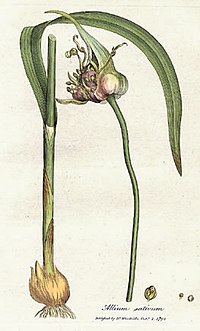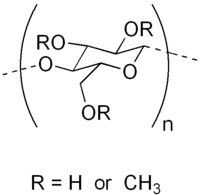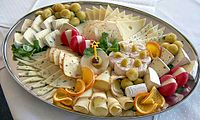
Fungicide smoke generated by electrical heating effectively controls gray mold of Chinese chives and reduces residue risk through adequate environmental sterilization.
Sign Up to like & getrecommendations! Published in 2022 at "Pest management science"
DOI: 10.1002/ps.7312
Abstract: BACKGROUND Labor-saving pesticide application technology is eagerly pursued in the planting system of Chinese chives. In this study, we developed a set of application approaches by turning fungicides into smoke to achieve this goal. RESULTS… read more here.
Keywords: application; smoke; chinese chives; electrical heating ... See more keywords

Effect of Chinese chives (Allium tuberosum) addition to carboxymethyl cellulose based food packaging films.
Sign Up to like & getrecommendations! Published in 2020 at "Carbohydrate polymers"
DOI: 10.1016/j.carbpol.2020.115944
Abstract: Carboxymethyl cellulose (CMC) based novel functional films containing Chinese chives root extract (CRE) at different concentrations (1, 3 and 5 % in w/w) were successfully fabricated. It was revealed by SEM that higher extract concentration… read more here.
Keywords: food packaging; chinese chives; food; carboxymethyl cellulose ... See more keywords

Electrophysiological and behavioral responses of Bradysia odoriphaga (Diptera: Sciaridae) to volatiles from its Host Plant, Chinese Chives (Allium tuberosum Rottler ex Spreng)
Sign Up to like & getrecommendations! Published in 2019 at "Journal of Economic Entomology"
DOI: 10.1093/jee/toz057
Abstract: Abstract Bradysia odoriphaga Yang et Zhang is a serious belowground pest of Chinese chives (Allium tuberosum). Our previous studies have indicated that B. odoriphaga females prefer to oviposit near the roots of Chinese chives rather… read more here.
Keywords: chives allium; bradysia odoriphaga; methyl allyl; allium tuberosum ... See more keywords

Residue, Dissipation Pattern, and Dietary Risk Assessment of Imidacloprid in Chinese Chives
Sign Up to like & getrecommendations! Published in 2022 at "Frontiers in Nutrition"
DOI: 10.3389/fnut.2022.846333
Abstract: The demand for Chinese chives is growing as they are also rich in vitamins, fiber, and sulfur nutrients. Chinese chives should be sprayed with imidacloprid to control pests and diseases to safeguard their yield and… read more here.
Keywords: dissipation; imidacloprid chinese; risk assessment; chinese chives ... See more keywords

LC-MS/MS Method Minimizing Matrix Effect for the Analysis of Bifenthrin and Butachlor in Chinese Chives and Its Application for Residual Study
Sign Up to like & getrecommendations! Published in 2023 at "Foods"
DOI: 10.3390/foods12081683
Abstract: The matrix effect refers to the change in the analytical signal caused by the matrix in which the sample is contained, as well as the impurities that are co-eluted with the target analyte. In crop… read more here.
Keywords: matrix effect; chinese chives; effect; bifenthrin butachlor ... See more keywords

Biosynthesis and Metabolism of Garlic Odor Compounds in Cultivated Chinese Chives (Allium tuberosum) and Wild Chinese Chives (Allium hookeri)
Sign Up to like & getrecommendations! Published in 2022 at "International Journal of Molecular Sciences"
DOI: 10.3390/ijms23137013
Abstract: Chinese chives is a popular herb vegetable and medicine in Asian countries. Southwest China is one of the centers of origin, and the mountainous areas in this region are rich in wild germplasm. In this… read more here.
Keywords: garlic odor; odor compounds; chives allium; chinese chives ... See more keywords